What are the Different Types of Betta Fish?
When shopping for your first betta fish at the pet store, it can be a little confusing trying to make heads or tails of all the different types. While they are all technically considered to be Betta splendens, these beautiful creatures have been selectively bred and hybridized with other Betta species over many, many generations to create the vast number of varieties we see today. The International Betta Congress (IBC) is a worldwide organization that holds betta fish shows on six continents, and they have set the standards for each category of fin shape, tail type, color groups, patterns, and so on. Based on their most recent exhibition standards book, let’s take a look at the most popular classes of Betta splendens that are available in the aquarium trade.
Sexing: Male vs. Female
Most of us are familiar with male betta fish. Generally speaking, they have large, spectacular finnage and a more aggressive response when shown another male betta fish or their own reflection. On the other hand, female bettas are usually shorter, both in body length and fin size. Their rounded abdomens may become swollen with eggs, and their temperament is not necessarily as aggressive as the males.
Common Forms of Betta Fish
Halfmoon Betta

Yellow halfmoon
The most well-known form of Betta splendens is the halfmoon betta. Its common name comes from the voluminous tail (or caudal fin) that looks like half of a circle or a clean ‘D’ shape that spreads to a full 180 degrees. The dorsal fin (i.e., fin on the fish’s back) and the anal fin (i.e., fin on the fish’s underside near the tail) are also very extended and ideally overlap with the edges of the tail when the betta fully spreads his finnage.
Crowntail Betta
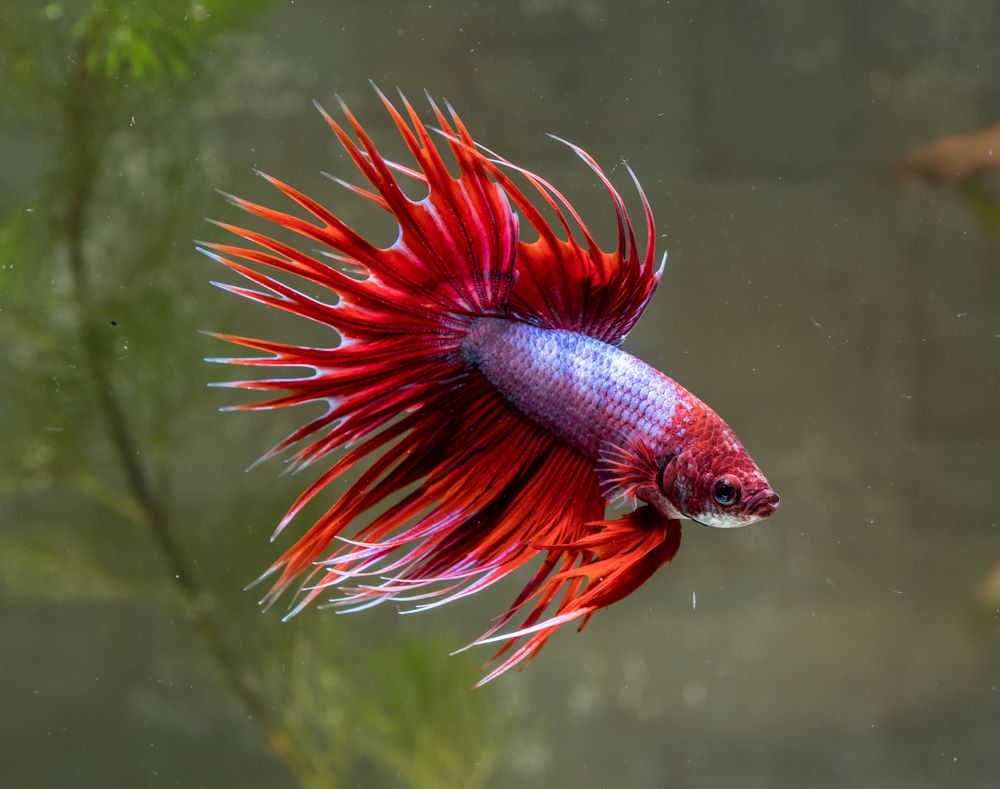
Double ray crowntail
Another very popular form of betta fish has a distinctive, crown-like tail, where the webbing in between each of the fin rays is greatly reduced. This prickly appearance applies to the dorsal, anal, and caudal fins. There are several types of “spikes” or ray extensions, such as double ray, single ray, and cross ray.
Plakat Betta
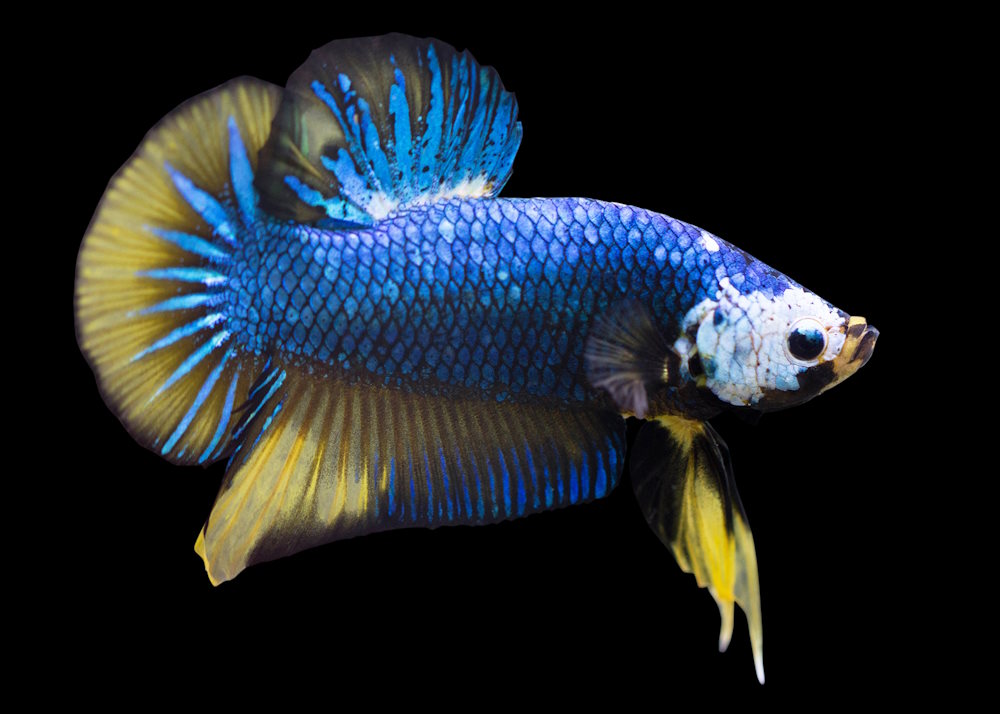
Mustard plakat
The plakat betta fish were once bred to fight for sport, so they do not have the curtain-like, billowy finnage that bettas are known for. Instead, they possess much shorter fins and tail that allow them to zoom through the water. Some hobbyists say that shortfin bettas are usually more aggressive than longfin bettas because of their heritage, but that really depends on the personality of each individual betta. Unlike the halfmoon betta, the anal fin is less rectangular in shape and is somewhat pointed on the edge closest to the tail. Plakats often have longer ventral fins (i.e., the two fins under the fish’s chin) than other forms of betta fish.
The giant betta is a form variation of the plakat betta that continues to grow all throughout its life, instead of halting at adulthood like normal betta fish. To have the “giant” classification, their body length must reach more than 2.5 inches (6.35 cm) for males and have a very thick and hefty appearance compared to other forms.
Doubletail Betta

Halfmoon doubletail
These bettas have the unique feature of possessing two separate tails that connect directly to the fish’s body, which looks like a single tail that has been split into two lobes. Because the body structure must have a wide enough base to accommodate two tails, their body profile looks kind of short and stout compared to other bettas. The dorsal fin is also wider and more rectangular, just like the anal fin. The double tail can come in several variations, such as halfmoon, plakat, and even crowntail.
Veiltail Betta
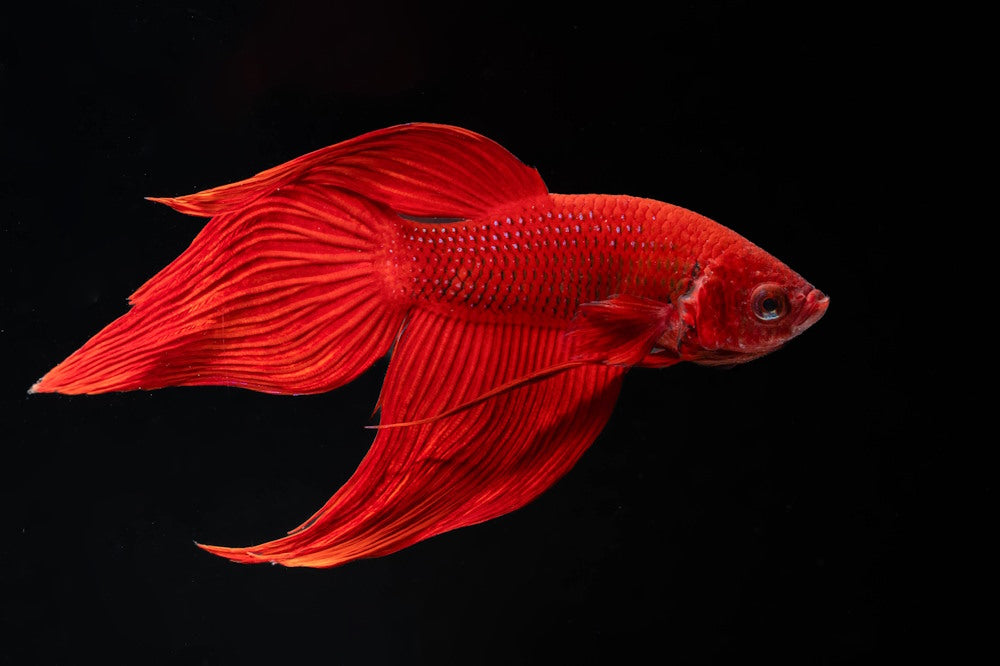
Red veiltail
This classic betta fish has been around for a very long time and is usually one of the cheapest forms for sale at the pet store. While it does have a longer tail than a plakat betta, it does not have the expansive, D-shaped tail of the halfmoon. Instead, the tail kind of looks like drooping tear drop, where the caudal fin closest to the body starts off with a bulbous shape that ends in a tapered tip. The dorsal fin has a narrower shape similar to a curved blade with a pointy end, and the ventral fins are long and thin. Finally, the anal fin has a trapezoidal shape such that the front edge is shorter and the back edge is longer.
Elephant Ear Betta
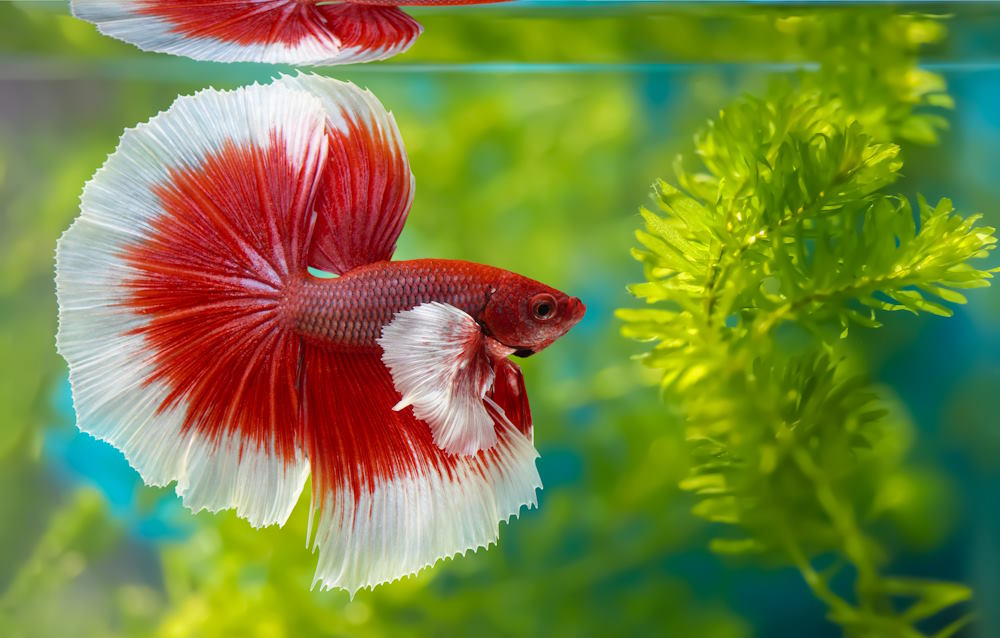
Halfmoon with large pectorals
Betta fish with large pectoral fins (i.e., the two fins just behind the gill plate) go by many common names, like elephant ear or dumbo bettas. Because this is just a descriptor for the enlarged pectoral fins, this form can be paired with all sorts of different tail types and color patterns. These delicate pectoral fins can be prone to splitting, so hobbyists advise removing any sharp decorations and keeping high water quality to speed up the healing process.
Alien Betta
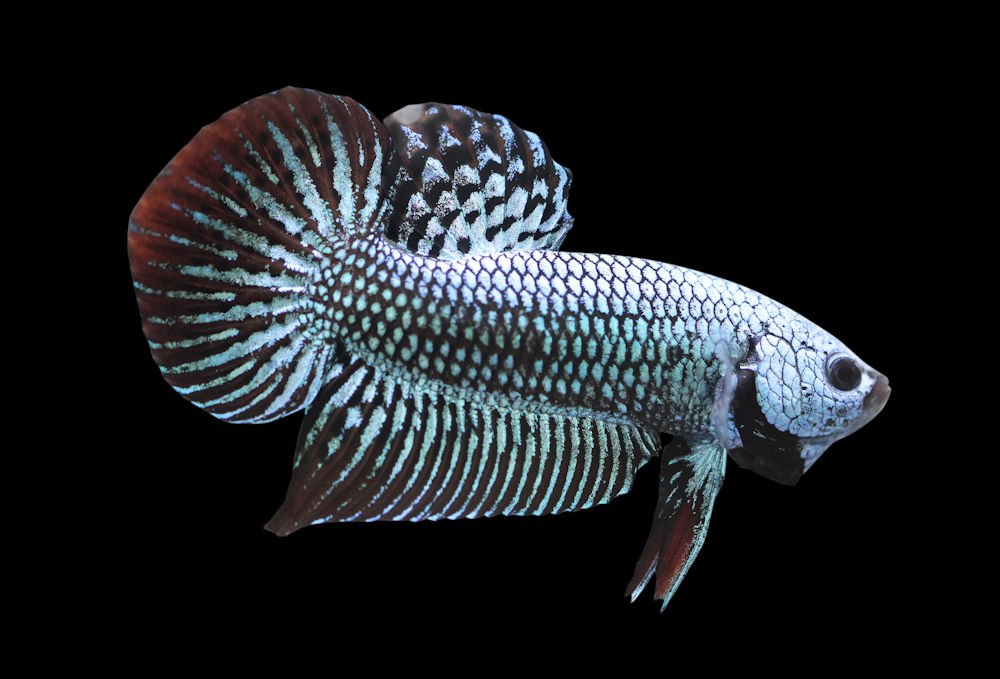
Alien betta
This hybridized betta combines the amazing colors of a domesticated betta with the small head and slender body of “wild type” betta species. Their dorsal, anal, and caudal fins notably have dark, thick banding or bars on them. They often come in blue to green iridescent colors with a non-black face and dark edging around the scales.
Common Colors of Betta Fish
It would be nearly impossible to describe the multitude of hues that betta fish can possess, but the main colors include red, orange, yellow, green, turquoise, blue, steel, black, and white. These colors may also have a metallic sheen, translucence, or other modifiers. Depending on the pattern of the colors, the bettas are labeled as single color, bicolor, or patterned (e.g., butterfly, marble, and orchid). Below are some examples of different color types you may encounter at the pet store or local fish store.
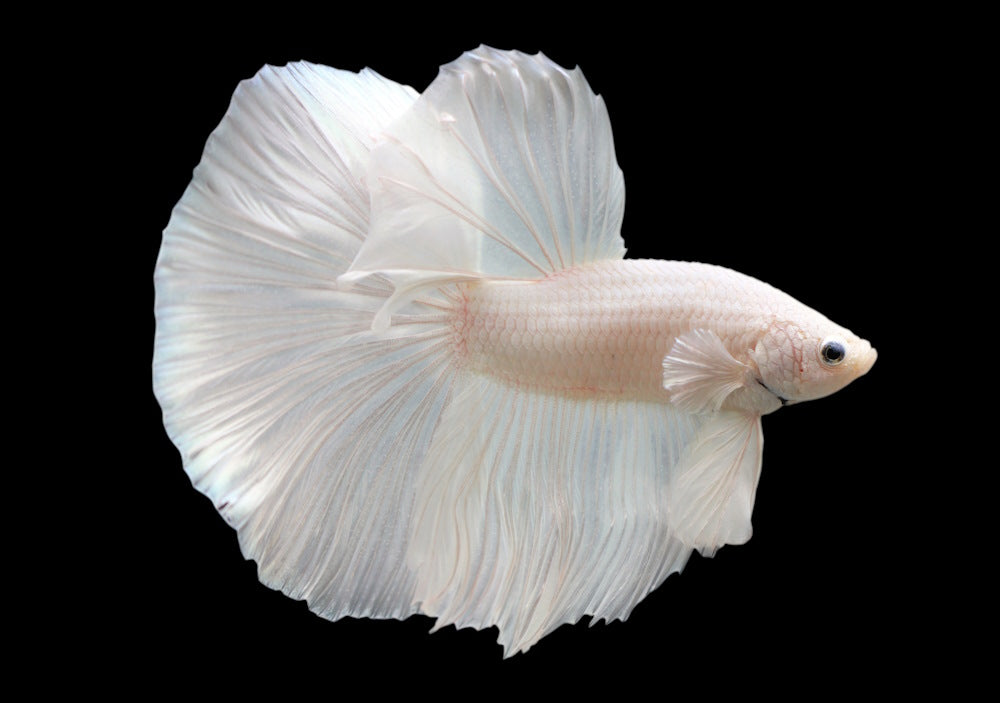
Single color white halfmoon
A single color betta has the same color on its head, body, and fins

Bicolor halfmoon
A bicolor betta consists of two colors, where the body is one color while the fins are a second color.
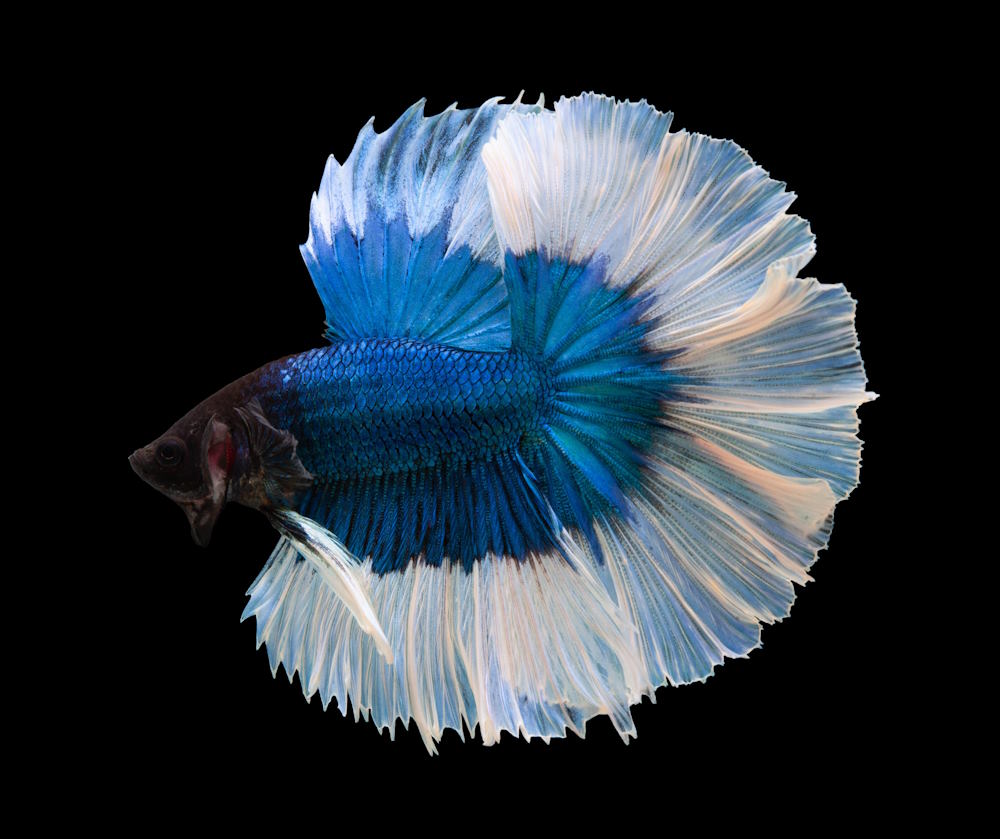
Blue and white butterfly halfmoon
A butterfly betta has a distinct banded pattern on the fins, in which the inner band and outer band are two different colors. There can be multiple color bands on the fins, but the key is to have a clear line between each of the bands. Also, the body does not have to be the same color as the inner band.

Marble plakat
A marble betta has an evenly distributed pattern of high contrast dots, splotches, or patches that ideally covers the entire body. The marble gene can cause a betta fish to have completely different color patterns over the course of its development from juvenile to adulthood.

Dalmatian halfmoon
A dalmatian betta is a non-marble betta that has a solid-colored body with evenly distributed spots only on its fins and tail.
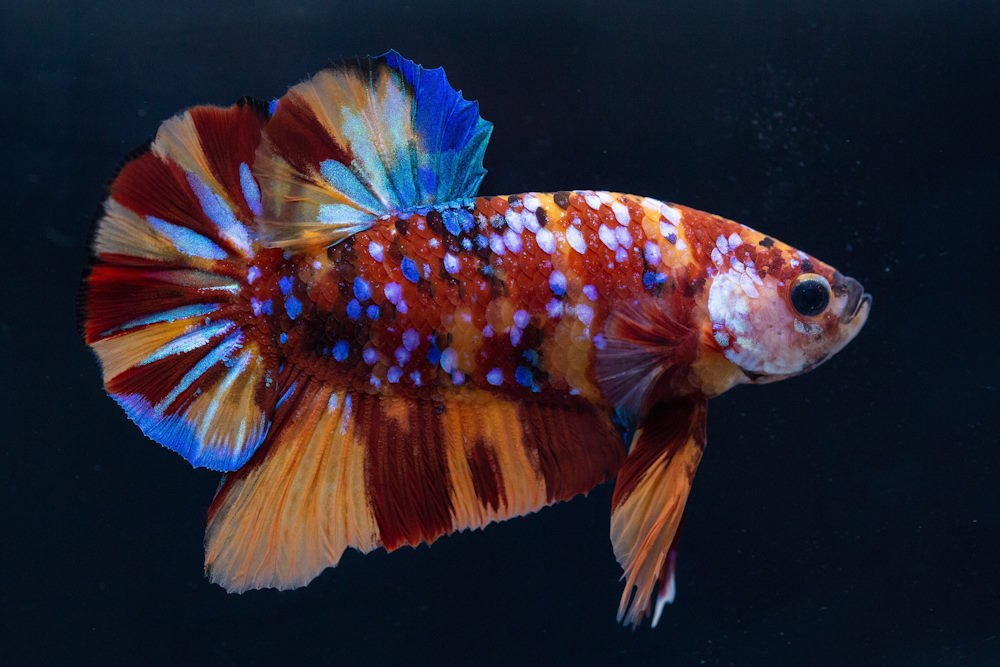
Multicolor plakat
A multicolor betta has 3 or more distinct colors that do not have to be evenly distributed but still have a pleasing pattern or arrangement.
An orchid betta is a striking all-black fish with a splash of accent color that appears between the rays of its dorsal, anal, and caudal fins. It almost looks like the tail is decorated with a beautiful burst of sunrays.
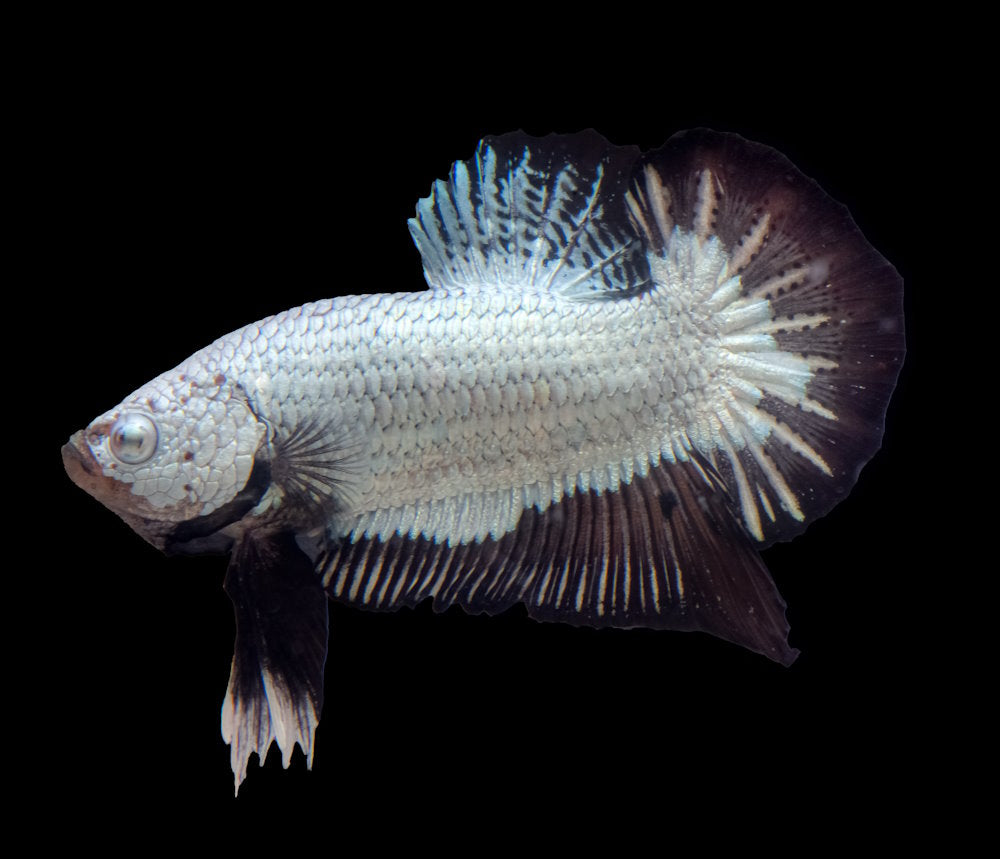
Black dragon with diamond eye
A dragon scale or dragon betta has thick, metallic scales on its body and head that kind of look like the heavily armored scales of a dragon. They can be prone to developing “diamond eye” — a condition in which the scales can grow to cover one or both of the eyes, resulting in blindness for the fish.
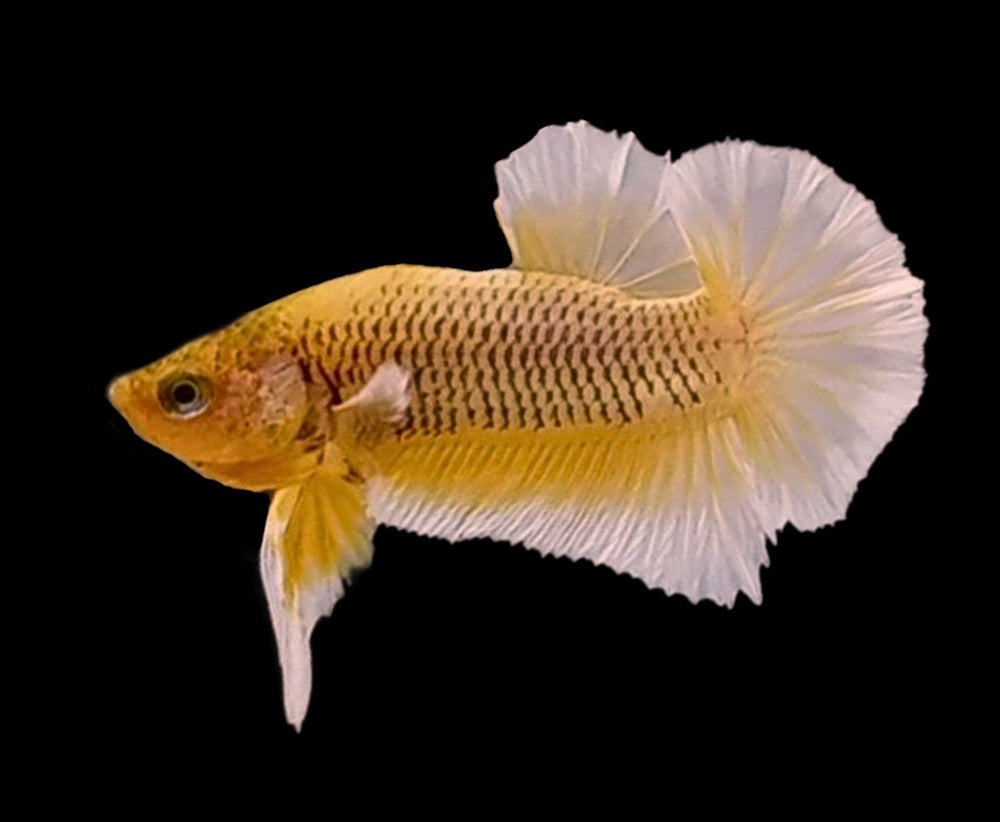
Pineapple plakat
A pineapple betta has a yellow body with black (or other high contrast color) edging around each scale, giving it the crisscross appearance of the popular Hawaiian fruit. Sometimes, the fins may be thinly edged in the same accent color as the scales edges on the body.
It is truly amazing to see all the colors and varieties that breeders have carefully developed over the years, which is why they remain such a popular pet for both beginners and veterans. While we do not ship bettas online, check out our list of preferred online vendors to see the latest stock they have available. For more information on how to care for the incredible Betta splendens, please peruse our collection of betta articles on their favorite foods, suitable tank mates, and much more.




